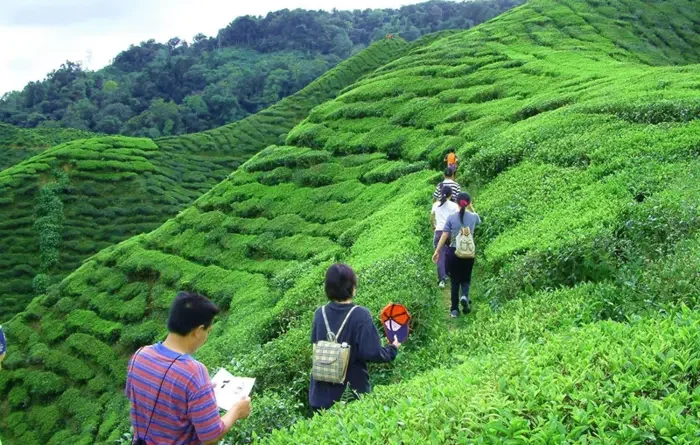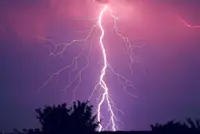On the next long weekend break, you may want to visit these tea plantations in Malaysia
Did you know that tea is the second most consumed beverage in the world? It loses only to the “elixir of life” – aka water.
May 21 has been designated by the United Nations (UN) as International Tea Day since 2019. We’re a few days late to the celebration this year, but better late than never, right?
From another perspective, we are a few months early, if we were to go by the “original” tea day date.
Prior to the UN adopting the day, several countries
On Dec 15, 2005, the inaugural celebration took place in India, one of the world’s largest tea producing countries.
Rather than simply shining the spotlight on tea, however, the group of tea workers who created the day also meant for it to highlight the issues faced by workers in the tea industry, especially the ones toiling away on the plantations and estates.
As such, the UN eventually declared an official International Tea Day, albeit on a different date, with its Food and Agriculture Organisation (FAO) tasked with leading the annual observance. According to FAO, “the celebration promotes the sustainable production, consumption, and trade of tea”.
had already started celebrating the steeped beverage 14 years earlier.
As Malaysians, a great way for us to commemorate the day is by supporting our local tea producers. If you can do more than just purchasing tea products and drinking copious amounts of teh tarik, it’s a good idea to visit the plantations as well, because understanding its significance – be it culturally, medically or fiscally – will give you a greater appreciation of your favourite beverage.
Cameron Highlands, Pahang
The cooler climate of Cameron Highlands makes it perfect for growing tea, hence the vast acres of plantations there, run by Malaysia’s two largest tea producers.
Several types of teas are produced at these plantations, including oolong and green teas, but the most produced is none other than black tea. It is the main ingredient of the nation’s beloved teh tarik and “teh o ais” after all.
The main black tea maker, Boh, unsurprisingly owns the largest tea plantation in the country. You can visit the Boh Tea Plantation at Boh Road or the Boh-owned Sungai (alternatively spelled Sungei) Palas Tea Garden in Brinchang. Both are open daily except on Mondays.
If you want to take a peek at how Malaysian teas are made, join the “plantation walk” that’s offered by the second largest tea producer, Bharat Group, which operates its primary estate in Tanah Rata.
Its products, sold under the Cameron Valley Tea brand, are also available at its three tea houses, all open daily. Cameron Valley Tea House 1 and 2 are both located at Jalan Besar, Tanah Rata, while Cameron Valley Tea House KT is located in Kuala Terla.
Gopeng, Perak
Located roughly two hours away by car from Cameron Highlands is another tea valley, but this one looks starkly different. Instead of a hilly landscape dotted with lush tea bushes, you’ll see an endless sea of tall trees towering over you at this Gaharu Technologies-owned plantation.
Gaharu Tea Valley in Perak’s small town of Gopeng produces a different kind of tea, one called agarwood herbal tea.
Sold under the Hoga brand (Hoga being a portmanteau of “holistic” and “gaharu”), agarwood technically refers to the resinous heartwood of Aquilaria trees, but more often than not you’ll hear these trees being referred to as simply agarwood or gaharu trees. The leaves from these trees are what’s used to produce the agarwood herbal tea.
The tea valley is opened daily except on Tuesdays. You can spend a whole day here doing activities like admiring the view from the hilltop café, enjoying the cool waterfall and being a literal tree-hugger at the Hugging Park.
Ranau, Sabah
Over in the cooler corner of Sabah is where you’ll find the third largest tea producer in Malaysia. Established in 1978, Sabah Tea has been under Ipoh-based Yee Lee Corporation Berhad since 1997, when it was privatised.
Located at the foot of Mount Kinabalu in Ranau, Sabah Tea Garden is more than just a picturesque plantation. It also has a resort offering three types of accommodations. Based on how adventurous you’re feeling, you can opt to “rough it” on the camp grounds, experience traditional living in the longhouses, or have all your creature comforts in the cottages.
Stop by the resort’s restaurant to savour tea-infused food and beverage like pancakes, ice cream and the special Sabah Tea pandan teh tarik.
You can also take part in the many other activities available, such as the tea factory tour, jungle trekking, river trekking, morning sunrise walk, insect night walk and blowpipe lesson.
















Leave a Reply